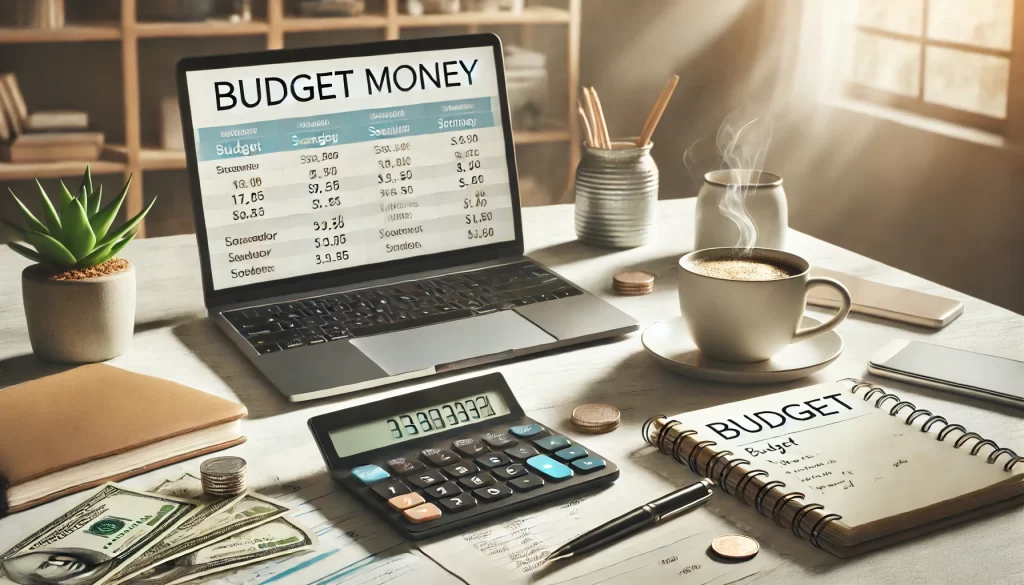- Economy & Budget
How to Create a Personal Budget from Scratch and Save Money

Managing personal finances can be overwhelming, but having a solid budget in place is the key to financial success. A personal budget helps you track your income and expenses, ensuring that you live within your means and achieve your financial goals.
If you’re new to budgeting, don’t worry! This guide will walk you through the process of creating a personal budget from scratch and provide tips on how to save money along the way.
Why You Need a Budget
Before we dive into the steps, let’s understand why having a budget is essential:
✔️ Gives You Control Over Your Finances – A budget helps you see where your money goes, making it easier to make informed decisions.
✔️ Prevents Overspending – Knowing your spending limits ensures that you don’t run out of money before your next paycheck.
✔️ Helps You Save for the Future – Whether you’re saving for a house, a vacation, or an emergency fund, a budget keeps you on track.
✔️ Reduces Financial Stress – When you have a plan, you’re less likely to worry about money.
Now that you know why budgeting is important, let’s start building yours!
Step 1: Calculate Your Income
Your income is the foundation of your budget. You need to know exactly how much money you earn each month.
💰 Include All Income Sources:
- Salary from your job (after taxes)
- Freelance work or side gigs
- Passive income (rental income, dividends, etc.)
- Government benefits or financial aid
👉 Example: If you earn $3,000 from your job and make an extra $500 from a side hustle, your total monthly income is $3,500.
Step 2: Track Your Expenses
The next step is to track where your money goes. Start by listing all your expenses and categorizing them.
📌 Fixed Expenses (Same Every Month):
- Rent or mortgage
- Utilities (electricity, water, internet)
- Car loan or public transport costs
- Insurance (health, car, life)
📌 Variable Expenses (Fluctuate Monthly):
- Groceries
- Entertainment (Netflix, dining out, hobbies)
- Shopping (clothes, gadgets, home items)
- Travel
📌 Debt Payments:
- Credit card bills
- Student loans
- Personal loans
📌 Savings & Investments:
- Emergency fund
- Retirement savings
- Stocks or mutual funds
👉 Pro Tip: Use apps like Mint, YNAB, or PocketGuard to automatically track your expenses.
Step 3: Set Spending Limits
Once you know your income and expenses, it’s time to set limits for each category.
A popular method is the 50/30/20 rule:
- 50% for necessities (rent, bills, food)
- 30% for wants (entertainment, shopping)
- 20% for savings and debt repayment
👉 Example: If your income is $3,500, your budget might look like this:
- $1,750 (50%) on necessities
- $1,050 (30%) on wants
- $700 (20%) on savings and debt
If you’re spending more than 50% on necessities, you might need to cut costs or find ways to increase your income.
Step 4: Identify Areas to Cut Costs
One of the best ways to save money is to reduce unnecessary expenses. Here are some quick ways to cut costs:
🚫 Cancel Unused Subscriptions – Review your streaming services, magazines, or memberships.
🏠 Reduce Utility Bills – Turn off lights, switch to energy-efficient appliances, and unplug devices when not in use.
🍽️ Eat at Home – Cooking instead of eating out can save you hundreds of dollars each month.
📅 Plan Your Shopping – Stick to a grocery list and avoid impulse purchases.
💳 Avoid Credit Card Interest – Pay off your balance in full each month to avoid high-interest charges.
Step 5: Automate Savings & Payments
Make saving money effortless by automating deposits and bill payments.
💰 Set Up Automatic Transfers – Schedule a portion of your paycheck to go directly into your savings account.
📅 Use Auto-Pay for Bills – This prevents late fees and keeps your credit score high.
💡 Round-Up Savings Apps – Apps like Acorns or Qapital round up your purchases and save the spare change.
Step 6: Monitor & Adjust Your Budget
A budget is not set in stone—it should evolve with your financial situation.
📌 Review Your Budget Monthly: Track your progress and adjust if necessary.
📉 Cut Expenses When Needed: If you overspend in one category, find another area to reduce.
📈 Increase Savings Over Time: As your income grows, boost your savings and investments.
👉 Example: If you get a raise, instead of spending more, increase your savings percentage to 25%.
Step 7: Stay Motivated & Keep Improving
💡 Set Financial Goals – Saving for a car? Paying off debt? Write down your goals and remind yourself why you’re budgeting.
👥 Find an Accountability Partner – Share your budget with a friend or family member to stay on track.
📚 Keep Learning – Read books, listen to podcasts, and stay updated on personal finance tips.
Popular books:
📖 “The Total Money Makeover” by Dave Ramsey
📖 “Your Money or Your Life” by Vicki Robin
📖 “I Will Teach You to Be Rich” by Ramit Sethi
Final Thoughts
Creating a personal budget is the first step toward financial freedom. By tracking your income, managing expenses, and making smart financial decisions, you’ll be on your way to a more secure and stress-free life.
🚀 Start budgeting today and take control of your financial future!






